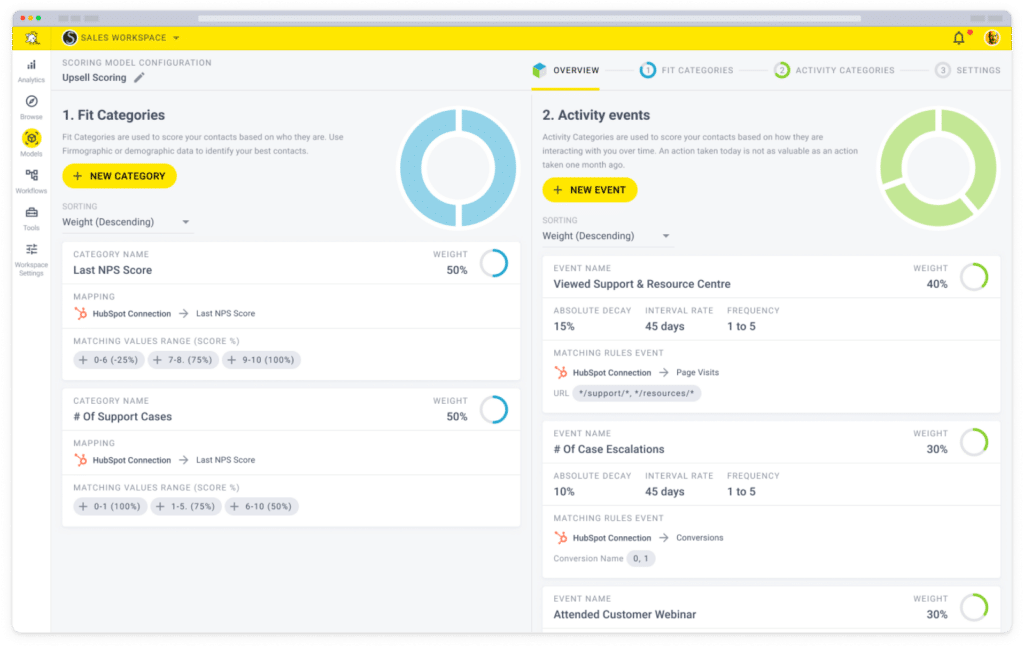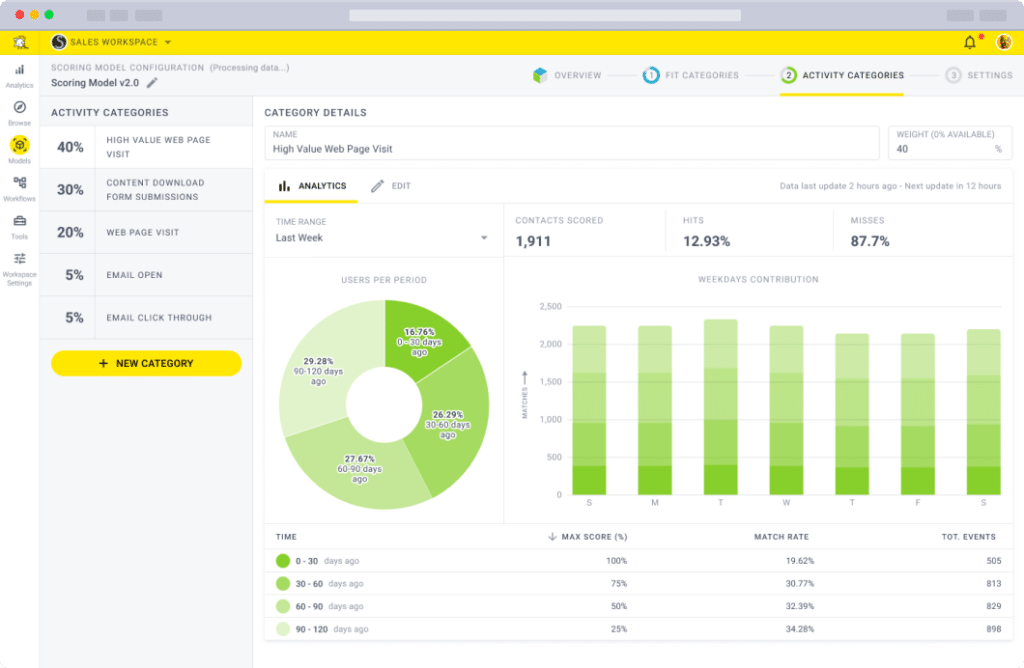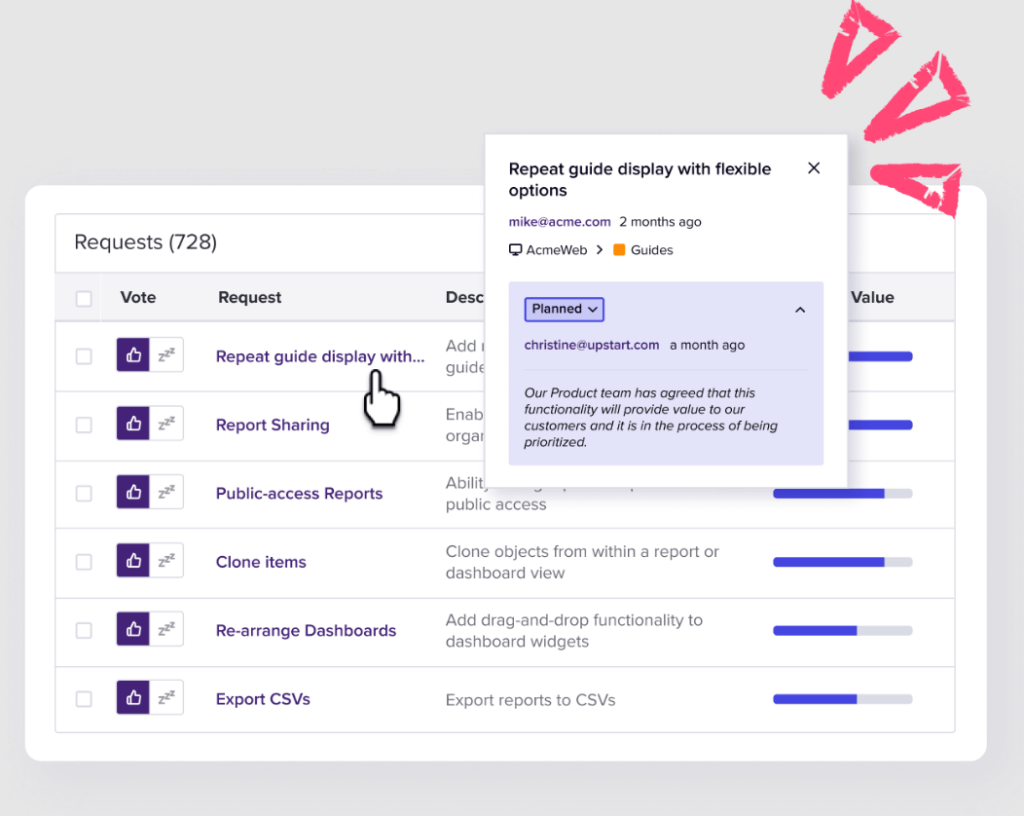

Unkover your competitors’ Marketing Secrets
Say goodbye to wasting hours on competitor analysis by equipping your team with an AI-driven, always-on competitive intelligence platform.


Say goodbye to wasting hours on competitor analysis by equipping your team with an AI-driven, always-on competitive intelligence platform.

Stay Ahead with AI-DRIVEN Competitive Intelligence
Unkover is your AI-driven Competitive Intelligence team delivering critical updates about your competitors the moment they happen:
Track your competitors website changes
Why spend all day stalking the competition when you don’t have to?
With Unkover, you’ll know instantly when your competitors tweak their messaging or shake up their pricing. No more endless scrolling through their sites or second-guessing your strategies.
Let us do the heavy lifting for you, ensuring you’re always in the loop by notifying you the moment a critical change happens on your competitor’s pages.
Sit back, relax, and keep winning—Unkover makes sure you’re not just in the game, you’re always a step ahead.


Read your competitors emails
Companies love updating their customers and prospects about relevant news, product updates, and special offers.
That juicy info from your competitors? It’s yours too. Unkover will automatically capture all their emails and bring them right to your doorstep—accessible to your entire team, anytime.
[COMING SOON: Our fine-tuned AI will sift through these emails, extract key information and send them over to the best team within your org. Less noise, more signal!]
We hear you! Unkover’s goal is not to flood you with tons of data points that no one in your team will ever read. We gather competitive intelligence from thousands of data sources and use AI to highlight actionable information to the right team in your company.
Say goodbye to noise. We’re 100% signal.
ROADMAP
We’re excited to get Unkover in your hands as soon as possible and keep building the best competitive intelligence tool with your precious feedback. The roadmap for the next few months is already exciting, so take a look!
While we build and deliver, here’s our promise to you: as an early tester and customer, you’ll lock in an exclusive bargain price we’ll never offer again in the future.

Spy on your competitors’ full marketing strategy: social, ads, content marketing, email flows, and more.

Track competitive Win/Loss analysis and build battle cards. Get alerted at every pricing change.

Get immediate alerts when competitors announce new features or major releases. Identify strengths and weaknesses from online reviews.

Get the competitive intelligence you need where you need it: Slack, eMail, MS Teams, Salesforce, Hubspot, Pipedrive and more.
slack integration
Unkover’s Slack integration lets you keep your whole team up to speed with your competitors’ updates.

Join now to lock in an exclusive 50% lifetime discount
For startups and small teams, it’s the essential toolkit you need to keep an eye on a select few competitors.

Up to 5 competitors

50 pages monitored

10 email workflows

3-day data refresh
$39
/per month
$ 79
50% discount
Billed annually
For growing businesses, it allows you to monitor more competitors, pages, and email workflows.

Up to 10 competitors

100 pages monitored

20 email workflows

1-day data refresh
$79
/per month
$ 159
50% discount
Billed annually
For large companies, it is tailored to meet the needs of multiple teams needing granular insights.

Custom number of competitors

Custom number of pages monitored

Custom number of email workflows

Hourly data refresh
Custom price
Billed annually

Traditional CRMs struggle to keep up in the product-led growth (PLG) era.
Sure, these CRMs might suffice for sales teams at the frontline. But for product-led companies, these tools miss one glaring feature: product data.
Without insights on how users interact with your product—not to mention the lack of a complete view of the user’s journey—there’s little you can do to speed up the sales process, improve your product, and catch churning customers before it happens.
Fortunately, that’s where PLG CRMs come in.
The PLG CRM suite is a treasure trove of customer and product insights that refines the product experience—which further optimizes your main growth channel, revenue, and relationship with customers.
The PLG CRM suite is a traditional CRM tool on steroids.
Instead of siloed data that only the sales department can access, a PLG CRM platform acts as a single source of truth for everyone in the revenue or customer-facing department (e.g., CRO, email marketer, account executive, and customer success manager).
PLG CRMs contain extremely detailed customer data from every touchpoint—like the specific nurturing email they engaged with or where they dropped off during onboarding.
These PLG CRM suites can be created by connecting your existing CRM and product analytics tools with a revenue acceleration platform like Breadcrumbs.
For example, here’s how it looks when you build a scoring model with Breadcrumbs, HubSpot (a CRM), and Pendo (a product analytics platform).

When you add a PLG CRM platform to your tech stack, you’ll discover it impacts the entire organization.
Here are four scenarios likely to happen when you get your teams onboard with the underutilized PLG software:
Without the PLG CRM tool, the product-led motion would fall to the ground.
In the product-led growth era, everyone in the revenue department—including the marketing team, sales team, customer success team, and product team—should be able to access the PLG CRM platform.
Check that it provides the following features besides the standard features a traditional CRM provides.
Lead scoring refers to the process of assigning leads a score. The higher the score, the easier it is to convert them to customers.
Contact scoring is heads and shoulders above lead scoring. Besides surfacing the hottest leads at the right time, it also identifies upsell opportunities and churn risks. In other words, it uncovers hidden revenue opportunities instead of giving only a single numerical score.
If you want to turn your product into a massive acquisition, conversion, retention, and expansion channel, you need to look at contact scoring.
Here’s how you can get started:
With Breadcrumbs, you can create timely scores with recency and frequency controls in your scoring models. Focus your efforts on leads who interacted with your product and content three days ago, not a year ago.

What makes Breadcrumbs streets ahead of traditional lead scoring tools is its co-dynamic scoring capabilities.
Get notified on your chosen CRM the second leads show buying intent. Analyze your customer data. And examine how the different data points play a role in hitting your revenue goals so that you can rinse and repeat for the days, months, and years to come.
Pro plans start at $799/month. Book a demo with Breadcrumbs to build your first scoring model, catch leads at the best time, and hit your revenue goals today.
A product experience platform helps you understand what users are doing specifically in your product. It answers the questions:
Besides improving onboarding and driving adoption through in-app walkthroughs, these product adoption platforms also help you gather and prioritize valuable user feedback.
For example, Pendo, a product experience suite that Breadcrumbs integrates with, centralizes user feedback according to customer segments.
Imagine a startup that wants to enter the enterprise market. It can review the feedback from its enterprise customers and plan its product improvements accordingly. To instill transparency and confidence, it could inform them of the recent changes in a roadmap.

This sounds fine and dandy, but how do you include these product data in your CRM?
Now that you’ve connected Breadcrumbs with your CRM to unlock contact scoring, here’s what you should do next:
You’ll get a complete picture of your customer’s journey in one place.

Discover what users are doing in your product across the entire journey and what’s holding back free users from upgrading.
+++
One last note before we end this section.
Many resources on product-led growth advocate focusing on PQLs.
At Breadcrumbs, we recommend focusing on SQLs as well.
There are two main reasons we’re preaching this approach.
One, not all PQLs need a paid plan. Sometimes, the free or limited features will suffice!
Case in point: As a freelance writer who works with long-term clients and sends contracts when projects begin, I only need at most three contracts every month. Since my e-signature software tool offers three free contracts every month for its freemium plan, I have no reason to upgrade to a paid plan.
This proves that there are far too many nuances with PQLs, which leads us to the second reason.
PQLs are still largely a siloed piece of data.
If you want to turn your product into a massive sales force, you need to connect all customer data across different touchpoints in a single source of truth.
That way, you’ll have a more holistic view of all users’ activities.

Long gone are the days of selling to C-suite executives. Or is it? Today, the…
Your PLG CRM acts as a single source of truth for your product-led company. Ensure that it boasts sophisticated contact scoring capabilities and accessible product analytics.
Get the most out of your existing tech stack. Book a demo with Breadcrumbs to get a 180-degree view of your customers and accelerate your revenue today.